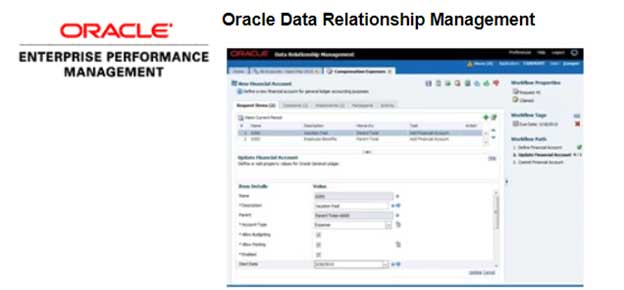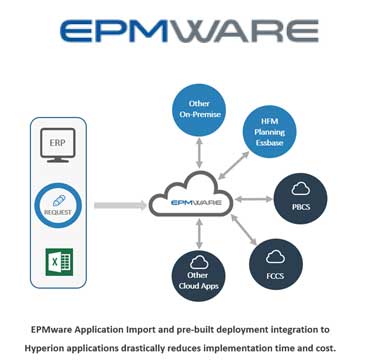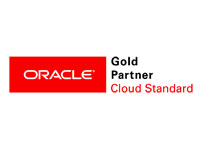Master Data Management Solutions
The Evolution of Master Data Management Solutions
Let's talk about the evolution of Master Data Management (MDM), including its definition, why MDM is necessary, and the various solutions available to ease the MDM process.
WHAT IS MASTER DATA MANAGEMENT?
Master Data Management (MDM) is an approach that helps to identify and integrate critical data. In each integration project, it is important that the Master Data Management strategy is resolved, whether it is a creation of a complete index or a simple collection of data attributes from a number of technological devices. MDM can eliminate the endless debates about whose data is the "right" data.
The task of MDM is to ensure that the most important data from various sources are received in time, with high quality, to maintain a consistent and accurate account of data identifiers. Its task is to create an organized system which ensures that the key (master) data of the company are:
- Credible and correct
- Uniform
- Available in the right place at the right time
WHY MASTER DATA MANAGEMENT?
1. Master Data Management removes the inconsistencies of data.
Master Data Management can help reduce losses caused by inconsistencies between different data systems. The most common inconsistencies are duplicate records and the inability to uniquely identify objects in different systems. Equally serious is the problem that occurs when different systems have different data for the same object, and one is not able to decide which of them is correct.
2. Master Data Management leads to more accurate information for enhanced decision-making.
Master Data Management helps to generate more accurate reporting by obtaining quality data, data that is consisten t across the organization. The results are reliable data and more precise and less expensive reporting.
3. Master Data Management will facilitate the integration of other systems.
If a company has implemented the functional management of key data, the integration of other systems will be much easier. What needs to be done is the building of a connection to the central data management. This eliminates the need to create links to all systems that need information from the newly integrated systems. This advantage is reflected most significantly when managing integration with external organizations.
MASTER DATA MANAGEMENT SOLUTIONS
Incorporating MDM into your business strategy is the first step. The next is assessing the product sets available to facilitate your MDM strategies. Here are some considerations:
Data Governance
When handling master data management, it is very important to understand data governance: the procedural and organizational aspects of data management within the company. The key purpose of data governance is replacing chaos with order. Practically, this means that the assignment of how, where, when, and who will make decisions related to data management. Assigning such rules and roles for the purpose of governing your data structure and handlers increases the likelihood of consistent, and, thus, reliable, data.
Enterprise architecture and metadata
Enterprise architecture is the organizational logic of business processes and IT infrastructure that reflects the requirements of integration and standardization of the operating model of the company (including data governance).
"Architecture" typically covers the following four areas:
- Business: the strategy, objectives, policies, operating models, etc.
- Applications: catalog charts and application software, interfaces, etc.
- Information: metadata, data models, data standards, data quality, etc.
- Technology: hardware, platforms, servers, networks, operating systems, etc.
The most important steps here are to:
- Find the technical platform for metadata.
- Create a structure for an MDM hub.
- Design and implement the processes linked to the data to deliver the Data Governance.
- Determine how data quality is supported by existing systems and what can be improved by changes in applications.
- Standardize systems for better return on investment and ease of integration.
Data Cleaning & Consolidation
One of the most common problems of all business data users is unreliable data. Wrong data can complicate the work of each individual user, delay the preparation of various reports and documents, or may lead to wrong business decisions. In all these cases, poor quality data costs money. One of the steps to solve these problems is an overall cleaning that can help get better data and also helps to understand the causes of errors.
- Disposable cleaning of data is usually used for single activities (such as data migration from one system to another) and it is the starting point for Data Management in an organization.
- Permanent solution to improve the quality of data is an operational solution, which is responsible for continual maintenance or improvements on the quality of the data.

Fourth Generation
New products for master data management and complex event processing will become more prevalent as it integrates with new IT trends, such as cloud computing. Recently many technology giants introduced this revolutionary concept of a "Fourth Generation" MDM platform: essentially, cloud-based MDM , based on independent processes and integration of platforms. It represents a move toward a new level of flexibility, scalability, and immediate adaptability for enterprise technologies. With cloud, there is a new seamless interconnection of solutions to the existing corporate IT. Cloud provides an opportunity for enhanced cooperation through access; with increased direct involvement of all relevant collaborators, cloud will facilitate faster development of business processes, necessary for optimized MDM.
Organizations with MDM teams must be prepared for a whole set of product innovations, including both a fully integrated portfolio of business processes and full support of cloud technology. To help the companies manage this challenges, many technological products were introduced recently by companies like Oracle, IBM, and SAS. Mostly, they are the integration platforms that connect business processes across the organization in real-time. This way organizations receive a complete solution that covers the entire lifecycle of their business processes: from design to implementation, execution and monitoring, through constant optimization. A cloud-based concept unveiled allows the entire lifecycle of a business process to work "in the cloud," including MDM strategies.
One of the key factors of success in a business process management effort is to simplify the cooperation of all staff involved in the process, and MDM cloud technology radically improves the possibilities of cooperation between business and IT, and equally between different levels of management and experts from both inside and outside the organization.
There are several MDM platforms and tools available. Below is information published last week by Gartner, in the "Magic Quadrant for Master Data Management of Product Data Solutions." While I have a depth of experience in Oracle and IBM platforms, the business rigor required for an MDM implementation is something I often advise upon, regardless of the platform. This particular quadrant is for MDM of product data solutions, but keep in mind that MDM applies to customer data solutions as well (Read about the distinction here). Source: Gartner, Magic Quadrant for Master Data Management of Product Data Solutions, Andrew White, Bill O'Kane, Terilyn Palanca, Michael Patrick Moran (November 12, 2015).


CONCLUSION
The purpose of MDM solutions is to maximize the benefits of unified management of key business data, particularly as new technology integrations occur, while minimizing interference with existing systems. The key goal is the fast adaptation of business processes to meet constantly changing market requirements, with minimal disruption to enterprise technologies reliant on the data these business processes affect.
With the fourth generation MDM platform, an enterprise will be better able to:
- Manage data from various sources while maintaining hierarchy.
- Use the platform for different types of architectures.
- Create its own model with flexible data.
- Easily configure data for rapid deployment.
The process-driven approach of MDM solutions themselves reflects the assessment of independent analysts, who assert such an approach is necessary if companies want to succeed with MDM. The only way MDM leads to risk reduction, improvement of operational efficiency, reduction of costs, increase in sales, or strategic differentiation is through a procedure-intensive approach to determine optimal methods in connecting and synchronizing master data with business processes. In the past, this required the care of your internal staff and external consultants; however, as we move toward the fourth generation MDM platform, these teams must additionally be cognizant of how MDM solutions placed in the cloud can help integrate internal teams and data faster. Teams should be ready to endeavor a cloud integration, in addition to their MDM efforts, particularly as more of these tools for enhanced MDM become available.
Contact MindStream Analytics
Want to know more about Master Data Management? Fill out the form below and we'll get back to you shortly.
Partner SpotLight

Oracle
Oracle has the most comprehensive suite of integrated, global business applications that enable organizations to make better decisions, reduce cost..